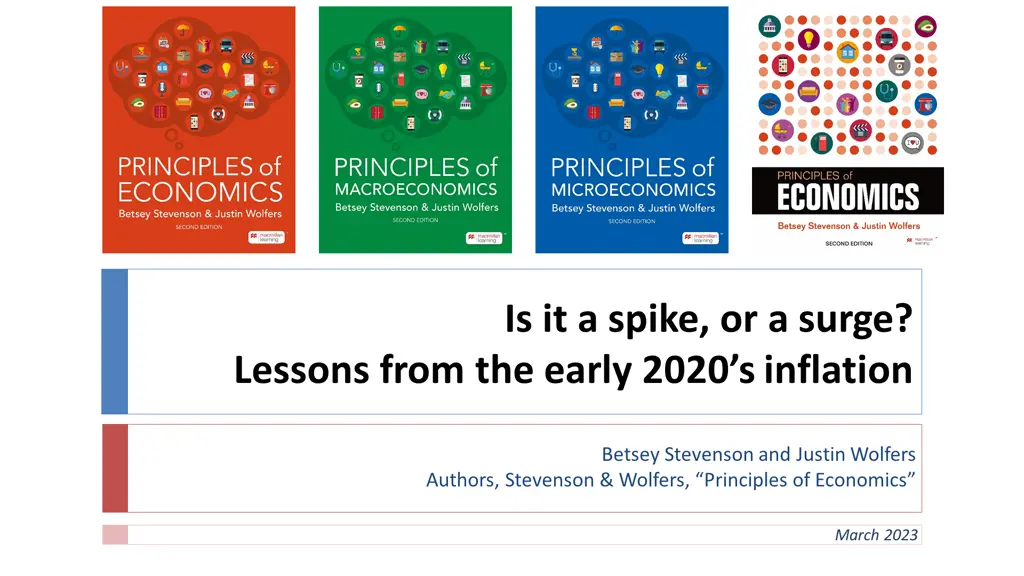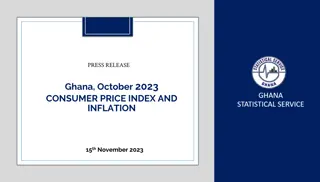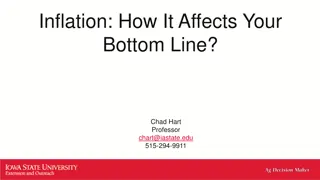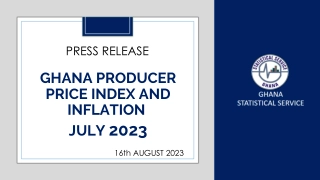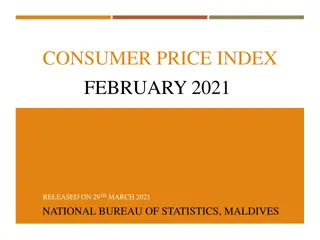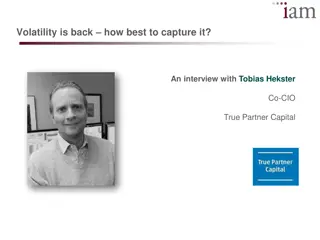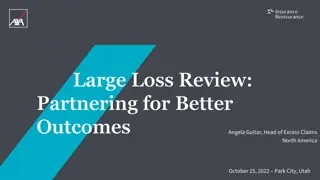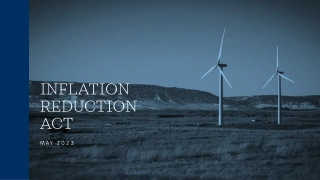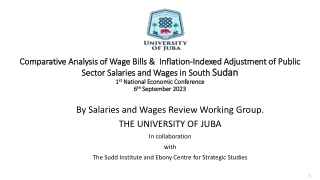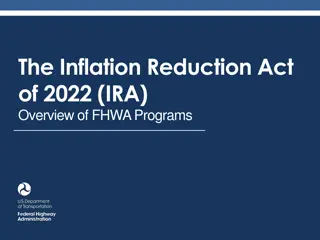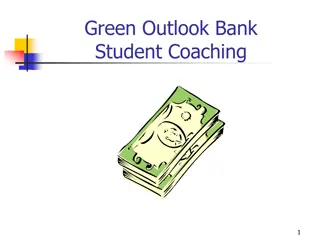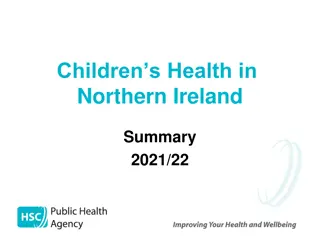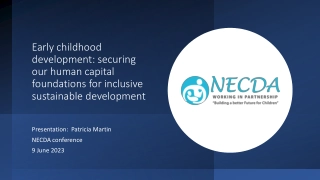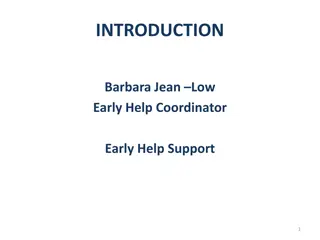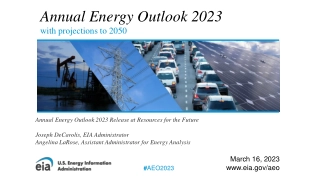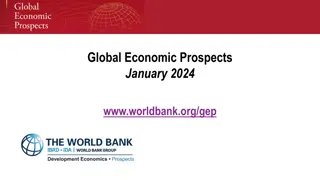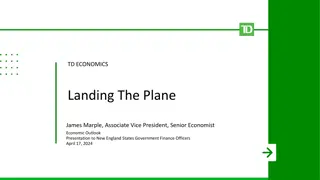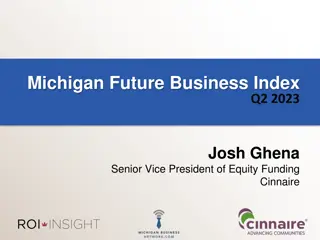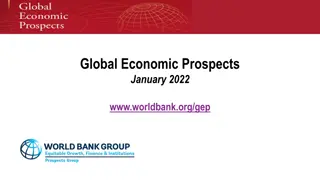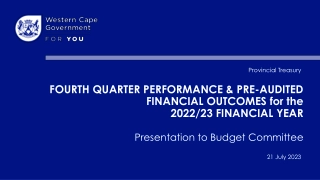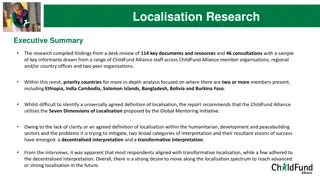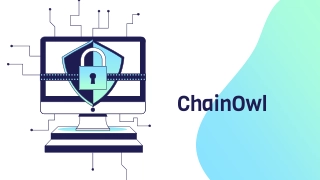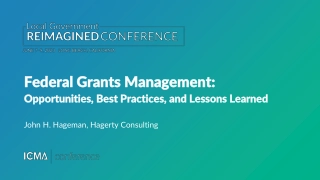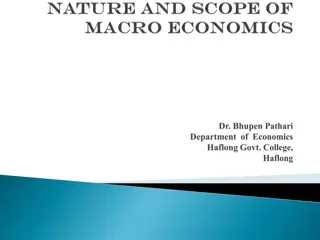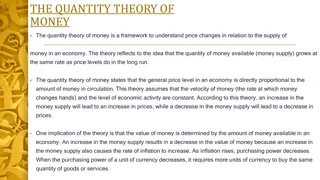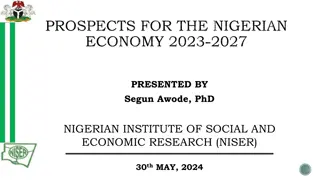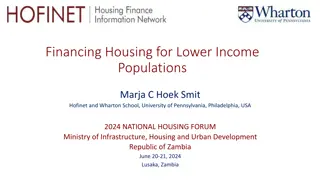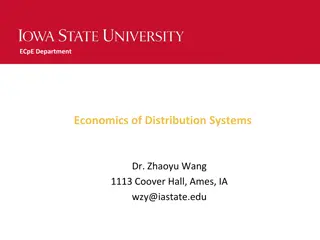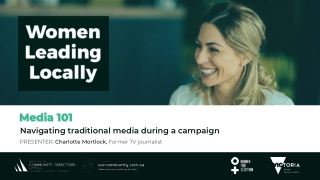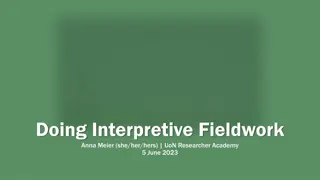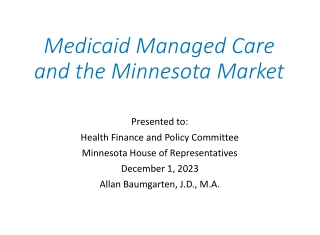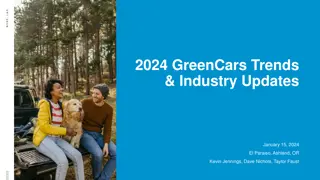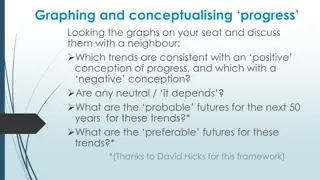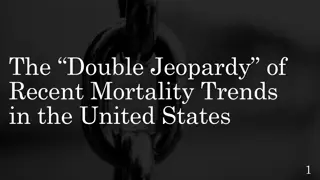Navigating Inflation Trends: Insights from Early 2020s
Explore insights on inflation trends from the early 2020s, including causes, data analysis, and theoretical perspectives. Learn about inflation expectations, different models, and the importance of data sources in understanding and predicting future inflation rates.
Download Presentation

Please find below an Image/Link to download the presentation.
The content on the website is provided AS IS for your information and personal use only. It may not be sold, licensed, or shared on other websites without obtaining consent from the author. Download presentation by click this link. If you encounter any issues during the download, it is possible that the publisher has removed the file from their server.
E N D
Presentation Transcript
Is it a spike, or a surge? Lessons from the early 2020 s inflation Betsey Stevenson and Justin Wolfers Authors, Stevenson & Wolfers, Principles of Economics March 2023
Inflation since 1970 Justin Wolfers, Lessons from the 2020s inflation 2
Alternative measures of inflation Justin Wolfers, Lessons from the 2020s inflation 3
A framework: Three causes of inflation Inflation = Expected inflation Cost-push inflation Demand-pull inflation + + inflation expectations inflation output relative to potential inflation production costs inflation Unexpected inflation Phillips Curve Unexpected inflation New Old Phillips Curve Inflation expectations Inflation Output gap Output gap Stevenson & Wolfers, Lessons from the 2020s inflation 4
Cause #1: Inflation expectations Where we were (1990s through 2020) Where we don t want to go (re-run of the inflationary 1970s) Stevenson & Wolfers, Lessons from the 2020s inflation 5
Cause #1: What can data on inflation expectations tell us? Open questions Whose expectations are most relevant? We have data from consumers, financial markets, and professional economists? Which time horizon is most relevant? Expectations over the next year, next 3-5 years, or the long run (10+ years) Stevenson & Wolfers, Lessons from the 2020s inflation 6
Cause #1: What can theories of inflation expectations tell us? Adaptive expectations: Recent inflation is our best guide to the future Inflation expectations will remain high (for as long as inflation remains high) Anchored expectations: Expectations are anchored to the Fed s target Inflation expectations will continue to be 2% Sticky expectations: People only revise their views about inflation sporadically Rising for some: Those who are yet to adjust their views in light of recent high inflation Falling for others: Those who are yet to adjust their views in light of the (recent) fall in inflation Rational expectations: Inflation expectations reflect all available data and a deep understanding of macroeconomic relationships Best proxied by bond market expectations (which remain relatively low) Different models (and different data) yield sharply different perspectives Stevenson and Wolfers, Lessons from the 2020s inflation 7
Cause #2: Demand-pull inflation (demand shocks) Expected inflation Cost-push inflation Demand-pull inflation output relative to potential inflation Unexpected inflation Phillips Curve Output gap Stevenson & Wolfers, Lessons from the 2020s inflation 8
Cause #2: Demand-pull inflation (demand shocks) Key question: How much excess demand is there? Different measures of excess demand: Output gap Unemployment rate Employment rate each yield different insights Stevenson and Wolfers, Lessons from the 2020s inflation 9
The output gap suggests the economy is close to normal But how confident can we be that we know what potential output really is? 10
The unemployment rate suggests the economy may be overheating Stevenson and Wolfers, Lessons from the 2020s inflation 11
The employment rate suggests the economy has a lot of unused capacity Stevenson and Wolfers, Lessons from the 2020s inflation 12
It is unclear how much demand-pull inflation has been a factor If Goldilocks were evaluating this economy, she is a bit unsure whether it is: Too hot The unemployment rate is near a 50-year low Too cold The employment-to-population rate is still quite a bit below pre-pandemic trends Just right Real GDP is close to estimates of potential output If this feels a bit unsatisfying, that s because Evaluating the state of the economy is hard Data often give conflicting messages This is especially true in the wake of a pandemic (not your usual economic shock, is it?) these are themes that will repeat when we turn to other causes of inflation Stevenson and Wolfers, Lessons from the 2020s inflation 13
Did sectoral shocks cause bottlenecks? The usual story of demand-pull inflation is about the whole economy Demand outstrips capacity bottlenecks higher prices But the pandemic was different: The big pivot was a sectoral reallocation from services goods services Pre-vaccine pandemic: Massive growth in the goods sector, partly offset by weakness in the services sector. An example: More Pelotons, fewer gym memberships Created bottlenecks in the goods sector Post-vaccine re-opening: Consumers returned to buying services (and fewer goods) Reducing bottlenecks in the goods sector Recently: Is this creating emerging bottlenecks in the service sector? Stevenson and Wolfers, Lessons from the 2020s inflation 14
A new kind of bottleneck? The shift from services, to goods, then services Justin Wolfers, Lessons from the 2020s inflation 15
The unbalanced nature of inflation Justin Wolfers, Lessons from the 2020s inflation 16
Cause #3: Cost-push inflation (supply shocks) Expected inflation Cost-push inflation Demand-pull inflation production costs inflation Unexpected inflation New Old Phillips Curve Output gap Stevenson & Wolfers, Lessons from the 2020s inflation 17
Cause #3: Cost-push inflation (supply shocks) Recent supply shocks Pandemic-related disruptions Global supply chain disruption Rising energy prices due to Russia s invasion of Ukraine Concern about rising wage costs and the risk of a wage- price spiral let s explore each, in turn Rising production costs shift the Phillips Curve up, leading to higher inflation 1. 2. Rising production costs 3. 4. Stevenson and Wolfers, Lessons from the 2020s inflation 18
Supply shock #1: Lockdowns had minimal direct effect on inflation because reduced supply was matched by reduced demand A rough-and-ready analysis Can think of this analysis product-by-product (micro), or in the demand for stuff (macro) An equivalent description using the language of macroeconomics: If supply (potential output) fell by (say) 20% and demand (actual GDP) also fell by the same amount The output gap (=?????? ????????? Pandemic Supply Price ) was unchanged ????????? No change in price Unexpected inflation Phillips Curve Phillips curve: No change in output gap No change in inflation Pandemic Demand Output gap Quantity Large fall in quantity 19 Stevenson & Wolfers, Lessons from the 2020s inflation
Supply shock #2: Supply chains disruptions raised transport costs Stevenson and Wolfers, Lessons from the 2020s inflation 20
Supply shock #3: Russias invasion of Ukraine pushed up energy prices Stevenson and Wolfers, Lessons from the 2020s inflation 21
Supply shock #4: Were fears of a wage-price spiral realized? Then (It happened) Now (Looks unlikely) 22
One more possibility Inflation = Expected inflation Cost-push inflation Demand-pull inflation + + Measurement error + Stevenson & Wolfers, Lessons from the 2020s inflation 23
Difficulties measuring inflation Normal times People buy more of the stuff that s getting cheaper Pandemic People bought more essentials (food) whose prices were rising and fewer inessentials (flights) whose prices were falling Few discounts, and so less substitution Substitution bias (The CPI is based on a fixed basket of goods and services, but people change what they buy) Many discounts offer many opportunities to substitute to cheaper goods Purchase goods at (cheap) in-person stores Discounts Purchase from (expensive) delivery services Outlet bias (The CPI considers a good from outlet A to be different from the same good from outlet B) More varieties are becoming available Fewer varieties of goods were available Variety bias (A greater variety of goods provides you with more ways to achieve a given standard of living) Rare What is the price of a dumbbell that you can t buy? Or of childcare that s unavailable? Stockouts (The CPI ignores goods that are out of stock, effectively saying their prices rose at the average rate. But didn t their prices effectively rise to $ ?) CPI usually overstates the true rise in the cost of living Stevenson and Wolfers, Lessons from the 2020s inflation 24
Difficulties measuring inflation during a global pandemic Normal times People buy more of the stuff that s getting cheaper Pandemic People bought more essentials (food) whose prices were rising and fewer inessentials (flights) whose prices were falling Few discounts, and so less substitution Substitution bias (The CPI is based on a fixed basket of goods and services, but people change what they buy) Many discounts offer many opportunities to substitute to cheaper goods Purchase goods at (cheap) in-person stores Discounts Purchase from (expensive) delivery services Outlet bias (The CPI considers a good from outlet A to be different from the same good from outlet B) More varieties are becoming available Fewer varieties of goods were available Variety bias (A greater variety of goods provides you with more ways to achieve a given standard of living) Rare What is the price of a dumbbell that you can t buy? Or of childcare that s unavailable? Stockouts (The CPI ignores goods that are out of stock, effectively saying their prices rose at the average rate. But didn t their prices effectively rise to $ ?) CPI usually overstates the true rise in the cost of living Pandemic CPI understated the true rise in the cost of living Stevenson and Wolfers, Lessons from the 2020s inflation 25
Difficulties measuring inflation through a pandemic Argument: The pandemic made economic life more expensive in ways not counted by the CPI Implications: 1. Official measures understated true inflation through 2020 2. As pandemic measures unwound, official measures overstated the true rate of inflation through 2021/22 Stevenson and Wolfers, Lessons from the 2020s inflation 26 Source: https://www.nytimes.com/2020/09/02/business/inflation-worse-pandemic-coronavirus.html
One more possibility Inflation = Expected inflation Cost-push inflation Demand-pull inflation + + Measurement error + Your goal: Use this framework to interpret the policy debate, and forecast inflation Stevenson & Wolfers, Lessons from the 2020s inflation 27
Two (linked) debates about inflation Transitory v. Persistent Team persistent worried that the forces driving inflation higher were more persistent, and that a low unemployment rate, combined with a big fiscal stimulus led the economy to overheat, causing inflation Team transitory argued that the pandemic-related disruptions would work their way through the system pretty quickly, and then inflation would return to normal (around 2 percent) Supply v. Demand Supply shocks are often transitory Pandemic-related disruption are temporary Supply chains will unsnarl over time As soon as gas prices stop rising (even if they re high) they stop contributing to inflation (which is the rate of change of prices) Policy recommendation: Patience. Inflation will pass, so policy should focus on achieving full employment expansionary fiscal/monetary policy Demand shocks cause excess demand and inflation The economy bounced back to near full-employment Subsequent fiscal stimulus and low interest rates would likely cause overheating Excess demand will persist, unless policy adjusts Policy recommendation: Must eliminate excess demand by slowing the economy to reduce inflation contractionary fiscal/monetary policy Stevenson and Wolfers, Lessons from the 2020s inflation 28
Looking forward: What do the experts say? Stevenson and Wolfers, Lessons from the 2020s inflation 29
Ongoing policy debates and discussion questions: Latest forecasts suggest inflation will gradually return to the Fed s 2% target Does this suggest that the shock was transitory Where transitory means a few years, rather than a few months? Or is this due to the Fed fighting inflation? By raising rates and slowing the economy? Or is this forecast wrong? Economists have been consistently wrong in forecasting that inflation will soon return to low levels 30
